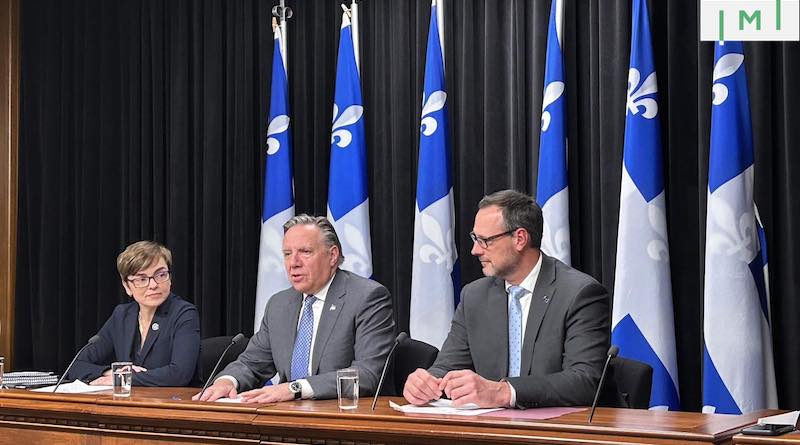Quebec to Reopen QIIP With French Language Requirement and $200,000 Donation, Likely by End of Year

Patrick McCarthy
Montreal
Quebec’s government yesterday announced it would implement sweeping reforms to the province’s economic immigration categories. The announcement covered changes for an array of immigration programs, including the popular Quebec Immigrant Investor Program (QIIP), which has idled since its suspension in 2019.
Crucially, the QIIP will retain several of its most popular characteristics:
- The program will remain a passive investment immigration program – the only one of its kind in Canada.
- Since investment will take the form of government bonds, the province of Quebec guarantees the principal sum.
- Investor funds will enjoy further safeguards thanks to the involvement of regulated investment dealers and trust comapnies.
- Investors can include their spouses or common-law partners, as well as unmarried children under 22 years of age, in their applications.
- The program offers permanent residency in Canada, and a path to citizenship.
Among the proposed changes to the QIIP the following stand out:
Two-stage process
Before obtaining permanent selection, the main applicant must spend six months in Quebec as a temporary resident, and either the main applicant or the spouse must spend a further six months in the province.
Many program stakeholders will welcome this proposal because the processing time for temporary status is markedly lower than for permanent residence. In many cases, investors will be able to plan to settle in Quebec within a year of applying.
Language requirements
Applicants will need to demonstrate an intermediate knowledge of spoken French (7 out of 12 on the Échelle québécoise des niveaux de compétence en français des personnes immigrantes adultes), a level characterized as follows: “Communicates independently, when the situation is predictable or partially predictable, in informal conversations or presentations on concrete topics related to current needs.”
Changes to the Financial Terms
Replacing the previously required five-year investment of $1,200,000, investors will now be required to a) invest CAD$1,000,000 for five years and (ii) make a CAD$200,000 non-reimbursable contribution.
The government of Quebec will guarantee the applicant’s CAD$1,000,000 investment. This guarantee not only caps the investor’s risk at $200,000 – the amount of the contribution – but also continues to give authorized financial intermediaries the ability to offer financing, using the government’s guarantee as collateral for the loan.
Near-term implications
The government of Quebec will publish the new regulations on June 7th, when a 45-day public consultation period will begin. The government has not set any timeline for the QIIP’s reopening but, given the current suspension of the QIIP expires on January 1, 2024, the program is likely to reopen before the end of this year.
While I don’t consider it likely that the proposed rules would change materially before the June 7th publication, or even during the 45-day consultation period that follows, anything can happen. Then again, the government has an overwhelming majority in the National Assembly and support in Quebec, and it is unlikely they have missed anything. What’s less predictable is the implementation; the regulations can say one thing, but the GPI (Guide des Procedures d’Immigration) will define how the regulations are implemented in practice, which will be something to keep an eye on, but only after the 45-day period ends. On balance, the probability is that the proposed new rules presented yesterday will not see substantive changes by the time they take effect.
As to when the new rules might take effect and the program will reopen, all we can say with certainty is that it will not be immediately upon the conclusion of the consultation period. Once the rules become law, the bureaucracy will take some time to prepare the administrative processes and procedures. For example, the intermediaries’ contract with the government – the so-called Three Party Agreement – will need a complete redraft. The same is true for the Investment Agreement that the applicants sign with the government, and we’ll also need to formulate an agreement for the new donation element of the program. Based on where we are now in that timeline, I would estimate that we can realistically expect the program to reopen sometime in the third quarter of this year.
Recent program history
Since its introduction in 1986, the QIIP has been Canada’s most popular business immigration program. Until 2014, Canada boasted two separate immigrant investor programs – one administered by the federal government and the other by the Quebec government. The QIIP was aimed at those intending to reside in Quebec, while the federal program targeted those with intentions to reside elsewhere in the country.
In 2014, the federal government terminated its investor program. Meanwhile, Quebec revamped its QIIP by introducing a new application intake system and a quota system for financial intermediaries, which ushered in a five-year period of relative stability for the program, which saw an average of 1,900 applications in each of those five years, resulting in FDI of more than CAD$5 billion.
On October 31st, 2019, the Quebec government suspended the QIIP, later extending the suspension to March 31st, 2023. The government’s objective was to study the program with an eye to finding ways to promote long-term settlement and socio-economic integration of QIIP applicants in the province of Quebec. On March 29th of this year, by way of Ministerial Decree, the Minister of Quebec Immigration once again suspended the QIIP, but this time only for nine months, leaving many in the industry confident that the heavy lifting was nearing completion and that the QIIP would reopen before the end of the year.
The QIIP stands alone in Canada as the only truly passive investment immigration program. Other programs, such as Quebec’s Entrepreneur Program, Ontario OINP Entrepreneur Stream, and the federal Startup Visa Program are Active Investor Visas, requiring not only the investment of the applicant but also his active involvement in the management of his business in Canada. For this reason, the QIIP has always been a popular option among high-net-worth clientele.
Would you like to contribute an article to IMI?
IMI relies on a global network of specialist contributors to keep our audience abreast of investment migration developments in every corner of the globe. If you have special expertise, or you’d simply like to voice your opinion, why not contribute an article to IMI?
To learn how to proceed, see our Article Contribution Guidelines.
I started my career with Citizenship and Immigration Canada’s Business Immigration Unit, and have spent the last 20+ years working with immigration practitioners around the world, assisting them so they can better serve their immigrant investor and business immigration clients. I bring a practical perspective to my work, borrowing not only from my years of business immigration experience, but also, as a Chartered Professional Accountant, from a deeper understanding of finance and business


